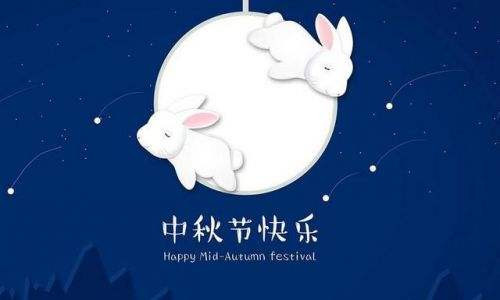The Mid–Autumn Festival, also known as Moon Festival or Moon cake Festival, is a traditional festival celebrated by many East and Southeast Asian people. It is the second-most important holiday after the Chinese New Year with a history dating back 3,000 years, when China's emperors worshipped the moon for bountiful harvests. The celebration is called Chuseok (autumn eve) in Korea and Tsukimi (moon-viewing) in Japan.
The festival is held on the 15th day of the 8th month of the Chinese lunisolar calendar with a full moon at night, corresponding to mid-September to early October of the Gregorian calendar. On this day, the Chinese believe that the moon is at its brightest and fullest size, coinciding with harvest time in the middle of Autumn.
The festival celebrates three fundamental concepts that are closely connected:
· Gathering, such as family and friends coming together, or harvesting crops for the festival. It is said the moon is the brightest and roundest on this day which means family reunion. Consequently, this is the main reason why the festival is thought to be important.
· Thanksgiving, to give thanks for the harvest, or for harmonious unions
· Praying (asking for conceptual or material satisfaction), such as for babies, a spouse, beauty, longevity, or for a good future
Traditions and myths surrounding the festival are formed around these concepts, although traditions have changed over time due to changes in technology, science, economy, culture, and religion. It's about well being together.
The Chinese have celebrated the harvest during the autumn full moon since the Shang dynasty (c. 1600–1046 BCE) For the Baiyue peoples, the harvest time commemorated the dragon who brought rain for the crops. The celebration as a festival only started to gain popularity during the early Tang dynasty (618–907 CE).[3] One legend explains that Emperor Xuanzong of Tang started to hold formal celebrations in his palace after having explored the Moon-Palace.[10] The term mid-autumn (中秋) first appeared in Rites of Zhou, a written collection of rituals of the Western Zhou dynasty (1046–771 BCE).[3] As for the royal court, it was dedicated to the goddess Taiyinxingjun. This is still true for Taoism and Chinese folk religion.
Empress Dowager Cixi (late 19th century) enjoyed celebrating Mid-Autumn Festival so much that she would spend the period between the thirteenth and seventeenth day of the eighth month staging elaborate rituals.
The festival was a time to enjoy the successful reaping of rice and wheat with food offerings made in honor of the moon. Today, it is still an occasion for outdoor reunions among friends and relatives to eat moon cake and watch the moon, a symbol of harmony and unity. During a year of a solar eclipse, it is typical for governmental offices, banks, and schools to close extra days in order to enjoy the extended celestial celebration an eclipse brings.The festival is celebrated with many cultural or regional customs, among them:
· Burning incense in reverence to deities including Chang'e.
· Performance of dragon and lion dances, which is mainly practiced in southern China.

Contact: Betty Wong
Phone: +0086 15018500959
Tel: +0086 15018500959
Whatsapp: +0086 15018500959
Email: Betty@myjprinter.com
Add: Jinduhui Building,Xueyuan Street,Yanhu District,Yuncheng,Shanxi (No.263, Bridge West, Fuyong Qiaotou, Baoan District, Shenzhen)
We chat
